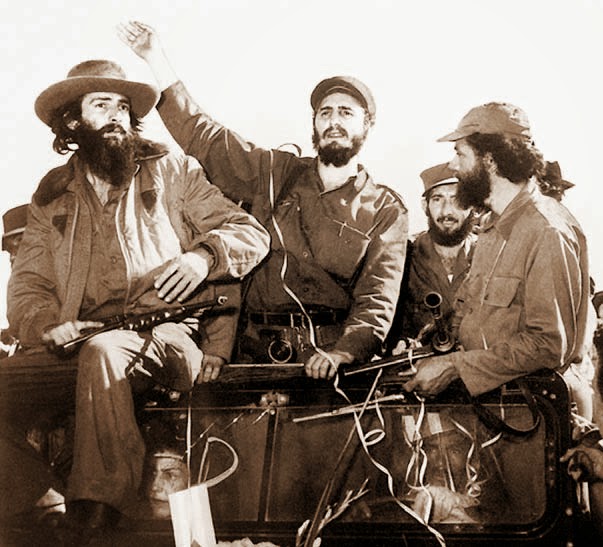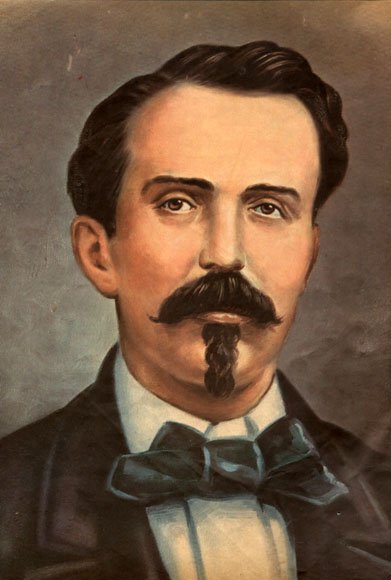|
Yara, Cuba
Yara is a small town and municipality in the Granma Province of Cuba, located halfway between the cities of Bayamo and Manzanillo, in the Gulf of Guacanayabo. Yara means "place" in the Taíno language. History The Taíno Cacique (chief) Hatuey was burnt at the stake in Yara, on February 2, 1512, after he organized a guerrilla war against the Spaniards. Hatuey is known as "Cuba's First National Hero".Running Fox, 'The Story of Cacique Hatuey, Cuba's First National Hero', La Voz del Pueblo Taíno (The Voice of the Taíno People) (United Confederation of Taino People, U.S. Regional Chapter, January 1998) This action gave birth to one of Cuban mayor's myths; ''"La Luz de Yara"'', The Light of Yara.The Light of Yara. On October 10, 1868, the beginning of the Ten Years' War in Cuba occurred and is known as ''El Grito de Yara'' (The Cry of Yara) and was the beginning of the First Cuban War of Independence. Yara was established as a municipality in 1912, when Manzanillo was split up. ... [...More Info...] [...Related Items...] OR: [Wikipedia] [Google] [Baidu] |
Municipalities Of Cuba
The Provinces of Cuba, provinces of Cuba are divided into 168 municipality, municipalities or ''municipios''. They were defined by Cuban Law Number 1304 of July 3, 1976Fifth United Nations Conference on the Standardization of Geographical Names, Vol. II, published by the United Nations, New York, 1991 and reformed in 2010 with the abrogation of the municipality of Varadero and the creation of two new provinces: Artemisa Province, Artemisa and Mayabeque Province, Mayabeque in place of former La Habana Province. Summary The municipalities are listed below, by province: List of municipalities Municipal maps The maps below show the municipal subdivision of each province, in yellow, within Cuba. Each provincial capital is shown in red. Artemisa (Cuban municipal map).png, Artemisa Province, Artemisa Camagüey (Cuban municipal map).png, Camagüey Province, Camagüey Ciego de Ávila (Cuban municipal map).png, Ciego de Ávila Province, Ciego de Ávila Cienfuegos (Cuban municipal map). ... [...More Info...] [...Related Items...] OR: [Wikipedia] [Google] [Baidu] |
Barrio
''Barrio'' () is a Spanish language, Spanish word that means "Quarter (urban subdivision), quarter" or "neighborhood". In the modern Spanish language, it is generally defined as each area of a city, usually delimited by functional (e.g. residential, commercial, industrial, etc.), social, architectural or morphological features. In Spain, several Latin America, Latin American countries and the Philippines, the term may also be used to officially denote a division of a municipality. ''Barrio'' is an arabism (Classical Arabic ''barrī'': "wild" via Andalusian Arabic ''bárri'': "exterior"). Usage In Argentina and Uruguay, a ''barrio'' is a division of a municipality officially delineated by the local authority at a later time, and it sometimes keeps a distinct character from other areas (as in the Barrios and Communes of Buenos Aires, barrios of Buenos Aires even if they have been superseded by larger administrative divisions). The word does not have a special socioeconomic connotat ... [...More Info...] [...Related Items...] OR: [Wikipedia] [Google] [Baidu] |
Buey Arriba
Buey Arriba is a municipality and town in the Granma Province of Cuba. It is located south of Bayamo, the provincial capital. Demographics In 2004, the municipality of Buey Arriba had a population of 31,327. With a total area of , it has a population density of . See also *Municipalities of Cuba *List of cities in Cuba This is a list of cities in Cuba with at least 20,000 inhabitants, listed in descending order. Population data refers to city proper and not to the whole municipality, because they include large rural areas with several villages. All figu ... References External links Populated places in Granma Province {{Cuba-geo-stub ... [...More Info...] [...Related Items...] OR: [Wikipedia] [Google] [Baidu] |
Río Cauto, Cuba
Río Cauto is a municipality and town in the Granma Province of Cuba. It is located in the northern part of the province, upstream of the mouth of Cauto River. Demographics In 2004, the municipality of Río Cauto had a population of 47,833. With a total area of , it has a population density of . See also *Municipalities of Cuba *List of cities in Cuba References External links Populated places in Granma Province {{Cuba-geo-stub ... [...More Info...] [...Related Items...] OR: [Wikipedia] [Google] [Baidu] |
List Of Cities In Cuba ...
This is a list of cities in Cuba with at least 20,000 inhabitants, listed in descending order. Population data refers to city proper and not to the whole municipality, because they include large rural areas with several villages. All figures are accurate and provincial capitals are shown in bold. See also * List of places in Cuba * Municipalities of Cuba * Provinces of Cuba References External links 2012 population statistics of Cuba {{North America topic, List of cities in Cuba, List of cities in Cities * Cuba Cuba ( , ), officially the Republic of Cuba ( es, República de Cuba, links=no ), is an island country comprising the island of Cuba, as well as Isla de la Juventud and several minor archipelagos. Cuba is located where the northern Caribbea ... [...More Info...] [...Related Items...] OR: [Wikipedia] [Google] [Baidu] |
Circuito Sur De Oriente
The ''Circuito Sur de Oriente'' (CSO), meaning "Southern Circuit of the Orient", is a west-east highway connecting Bayamo to Santiago de Cuba, through Manzanillo, Niquero and the southern coastal side of eastern Cuba, below the Sierra Maestra mountain range.Source: ''Mapa de Carreteras de Cuba'' (Road map of Cuba). Ediciones GEO, Havana 2011 - Also known as ''Circuito Guacanayabo-Sur de Oriente'', because it crosses the Gulf of Guacanayabo, the name ''Oriente'' (meaning "Orient"), refers to the ancient and former Oriente Province. With a length of 347 km, it is the fourth-longest Cuban highway after the " Carretera Central", the "Circuito Norte" and the " Circuito Sur". Route Description The CSO, whose endpoints cross the Carretera Central, starts in Bayamo, capital of Granma Province, and ends in Santiago, the second Cuban city and capital of Santiago de Cuba Province. It is divided into a pair of ''Carretera'' branches: *The 6-4, also known as "Carretera a Manzanillo", " ... [...More Info...] [...Related Items...] OR: [Wikipedia] [Google] [Baidu] |
Huber Matos
Huber Matos Benítez (26 November 1918 – 27 February 2014) was a Cuban military leader, political dissident, activist, and writer. He opposed the dictatorship of Fulgencio Batista from its inception in 1952 and fought alongside Fidel Castro, Raul Castro, Che Guevara, Camilo Cienfuegos and other members of the 26th of July Movement to overthrow it. Following the success of the Cuban Revolution that brought Fidel Castro to power, he criticized the regime's shift in favor of Marxist principles and ties to the Popular Socialist Party (PSP). Convicted of treason and sedition by the revolutionary government, he spent 20 years in prison (1959–1979) before being released in 1979. He then divided his time between Miami, Florida, and Costa Rica while continuing to protest the policies of the Cuban government. Early life Matos was born in Yara, in Oriente Province. He became a school teacher in Manzanillo, while also owning a small rice plantation. He joined the Cuban nationalist pa ... [...More Info...] [...Related Items...] OR: [Wikipedia] [Google] [Baidu] |
Harry Villegas
Harry "Pombo" Villegas (10 May 1940 – 29 December 2019) was a Cuban communist guerrilla. He was born in Yara and was a descendant of African slaves. He fought alongside Che Guevara in battles from the Sierra Maestra to the Bolivian insurgency. From 1977 to 1979, and again from 1981 to 1988, Villegas was part of the leadership of Cuba's volunteer military mission in Angola, fighting alongside Angolan and Namibian forces against aggression by South Africa's apartheid regime. Villegas was a Central Committee member of the Communist Party of Cuba from 1997 to 2011, a deputy of Cuba's National Assembly, and executive vice president of the Association of Combatants of the Cuban Revolution. Villegas was also a published writer. He died aged 79 in Havana Havana (; Spanish: ''La Habana'' ) is the capital and largest city of Cuba. The heart of the La Habana Province, Havana is the country's main port and commercial center. [...More Info...] [...Related Items...] OR: [Wikipedia] [Google] [Baidu] |
Tete Puebla
Tete is the capital city of Tete Province in Mozambique. It is located on the Zambezi River, and is the site of two of the four bridges crossing the river in Mozambique. A Swahili trade center before the Portuguese colonial era, Tete continues to dominate the west-central part of the country and region, and is the largest city on the Zambezi. In the local language, Nyungwe, Tete (or Mitete) means "reed". History The region was an important Swahili trade center before the Portuguese colonial era. On the east coast of Africa the Portuguese were drawn to Mozambique and the Zambezi river by news of a local ruler, the Munhumutapa, who was said to have had fabulous wealth in gold. In their efforts to reach the Munhumutapa, the Portuguese established in 1531 two settlements far up the Zambezi – one of them, at Tete, some from the sea. The Munhumutapa Kingdom and gold mines remained autonomous and mostly isolated from the Portuguese. But in this region of east Africa – ... [...More Info...] [...Related Items...] OR: [Wikipedia] [Google] [Baidu] |
Bartolomé Masó
Bartolomé de Jesús Masó Márquez (21 December 1830 in Yara – 14 June 1907 in Manzanillo) was a Cuban politician and military, patriot for Cuban independence from the colonial power of Spain, and later President of the ''República en Armas'' ("Republic in Arms").Bartolomé Masó on the "" ( EcuRed) [...More Info...] [...Related Items...] OR: [Wikipedia] [Google] [Baidu] |
Veguitas
Yara is a small town and municipality in the Granma Province of Cuba, located halfway between the cities of Bayamo and Manzanillo, in the Gulf of Guacanayabo. Yara means "place" in the Taíno language. History The Taíno Cacique (chief) Hatuey was burnt at the stake in Yara, on February 2, 1512, after he organized a guerrilla war against the Spaniards. Hatuey is known as "Cuba's First National Hero".Running Fox, 'The Story of Cacique Hatuey, Cuba's First National Hero', La Voz del Pueblo Taíno (The Voice of the Taíno People) (United Confederation of Taino People, U.S. Regional Chapter, January 1998) This action gave birth to one of Cuban mayor's myths; ''"La Luz de Yara"'', The Light of Yara.The Light of Yara. On October 10, 1868, the beginning of the Ten Years' War in Cuba occurred and is known as ''El Grito de Yara'' (The Cry of Yara) and was the beginning of the First Cuban War of Independence. Yara was established as a municipality in 1912, when Manzanillo was split up. ... [...More Info...] [...Related Items...] OR: [Wikipedia] [Google] [Baidu] |
Ten Years' War
The Ten Years' War ( es, Guerra de los Diez Años; 1868–1878), also known as the Great War () and the War of '68, was part of Cuba's fight for independence from Spain. The uprising was led by Cuban-born planters and other wealthy natives. On 10 October 1868, sugar mill owner Carlos Manuel de Céspedes and his followers proclaimed independence, beginning the conflict. This was the first of three liberation wars that Cuba fought against Spain, the other two being the Little War (1879–1880) and the Cuban War of Independence (1895–1898). The final three months of the last conflict escalated with United States involvement, leading to the Spanish–American War. Background Slavery Cuban business owners demanded fundamental social and economic reforms from Spain, which ruled the colony. Lax enforcement of the slave trade ban had resulted in a dramatic increase in imports of Africans, estimated at 90,000 slaves from 1856 to 1860. This occurred despite a strong abolitionist m ... [...More Info...] [...Related Items...] OR: [Wikipedia] [Google] [Baidu] |
.jpg)



